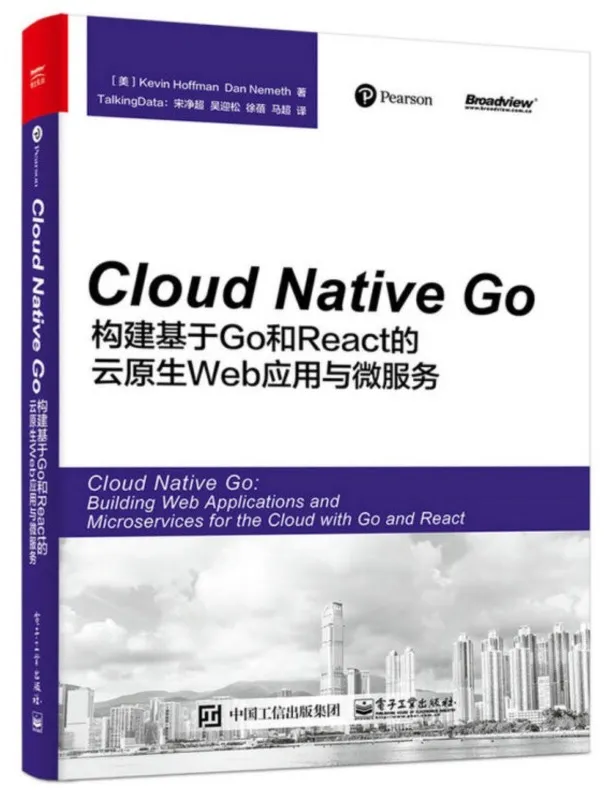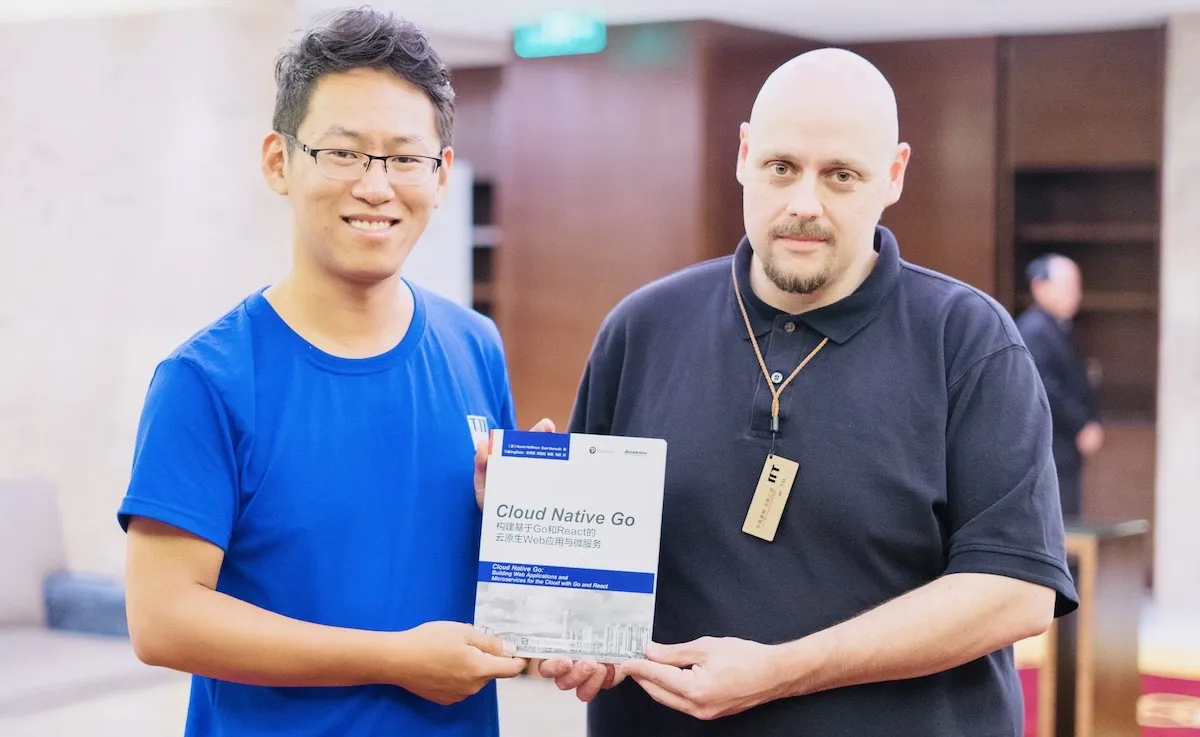“Cloud Native Go,” authored by Kevin Hoffman, translated by Song Jingchao, Wu Yingsong, Xu Bei, and Ma Chao, published by Publishing House of Electronics Industry in August 2017.

- Author: Kevin Hoffman & Dan Nemeth
- Translators: Song Jingchao, Wu Yingsong, Xu Bei, Ma Chao
- Publisher: Publishing House of Electronics Industry
- Full Name: Cloud Native Go - A Guide to Building Web Cloud-Native Applications with Go and React
This book has been published by the Publishing House of Electronics Industry and is available for purchase on JD.com.

Photo taken on September 12, 2017, in Beijing
Introduction
Cloud Native Go shows developers how to build large-scale cloud applications that can dynamically scale to handle almost any volume of data, traffic, or users while meeting the strong demands of today’s customers.
Kevin Hoffman and Dan Nemeth detail modern cloud-native applications, elucidating the factors, rules, and habits associated with rapid and reliable cloud-native development. They also introduce Go, a “simple and elegant” high-performance language particularly suited for cloud development.
In this book, you’ll create microservices using Go, add frontend web components using ReactJS and Flux, and master advanced cloud-native technologies based on Go. Hoffman and Nemeth demonstrate how to build continuous delivery pipelines using tools like Wercker, Docker, and Dockerhub; automatically push applications to platforms; and systematically monitor application performance in production.
- Learn the “way of the cloud”: why well-developed cloud software is essentially about mindset and rules
- Understand why using the Go language is the ideal choice for cloud-native microservices development
- Plan cloud applications that support continuous delivery and deployment
- Design service ecosystems and then build them test-first
- Push work in progress to the cloud
- Use event sourcing and CQRS patterns to respond to large-scale and high-throughput
- Secure cloud-based web applications: choices to make and avoid
- Create responsive cloud applications using third-party messaging providers
- Build large-scale, cloud-friendly GUIs using React and Flux
- Monitor dynamic scaling, failover, and fault tolerance in the cloud
About the Authors
Kevin Hoffman has helped businesses move their applications to the cloud in a modern and multi-language manner. He began programming at the age of 10, self-studying BASIC on a reassembled Commodore VIC-20. Since then, he has been passionate about building software and has spent a lot of time learning languages, frameworks, and patterns. He has built a range of software, from remote-controlled drones and biometric security systems to ultra-low-latency financial applications and mobile apps. He fell in love with the Go language while building custom components that work with Pivotal Cloud Foundry.
Kevin is the author of the popular fantasy book series (The Sigilord Chronicles) and eagerly anticipates combining his love of building software with his love of building fantasy worlds.
Dan Nemeth is currently a Consulting Solution Architect at Pivotal, supporting Pivotal Cloud Foundry. He has been developing software since the days of the Commodore 64 and began coding professionally in 1995, writing CGI scripts in ANSIC for a local ISP. Since then, most of his career has been spent as an independent consultant providing solutions to industries ranging from finance to pharmaceuticals, using various languages and frameworks of the time. Dan recently adopted Go as his home and enthusiastically applies it to all his projects.
When Dan isn’t in front of a computer, he can often be found sailing or fly-fishing near Annapolis.
Table of Contents
- Chapter 1: The Way of the Cloud
- Chapter 2: Getting Started
- Chapter 3: Getting to Know Go
- Chapter 4: Continuous Delivery
- Chapter 5: Building Microservices in Go
- Chapter 6: Leveraging Backend Services
- Chapter 7: Building Data Services
- Chapter 8: Event Sourcing and CQRS
- Chapter 9: Building Web Applications with Go
- Chapter 10: Cloud Security
- Chapter 11: Using WebSockets
- Chapter 12: Building Web Views with React
- Chapter 13: Building Scalable UIs with Flux
- Chapter 14: Creating a Full Application: World of FluxCraft
- Chapter 15: Conclusion
- Appendix A: Troubleshooting Cloud Applications
- Index